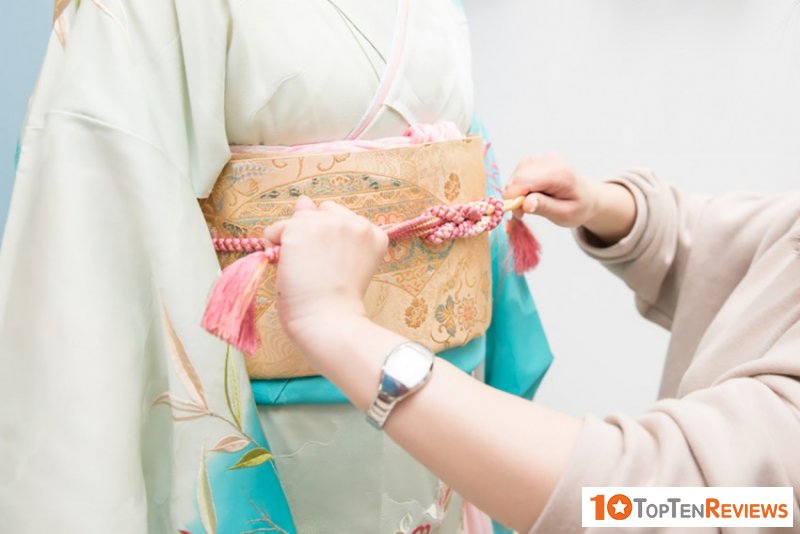Each ethnic group has its own unique costume. If the Vietnamese are proud of the Ao Dai that emphasizes the beauty of the body curves, the Chinese women become slimmer with the cheongsam, while the Japanese women are gentle and shy in their Kimono costumes. Each Kimono shirt has a different meaning. Let's find out with Top Ten Reviews what the purpose of the Kimono in Japanese culture is?
What are kimonos, and when are they worn?
The Kimono is considered the traditional dress and national dress of Japan. In Japanese, Kimono is a general term for all types of clothing. However, after experiencing ups and downs, events in history, and many times changing shape and color, Kimono has become a familiar and famous name worldwide when talking about Japanese costumes.
How to wear Kimono has a clear division by age, social class, even by season. Today, kimonos are often worn on special occasions, frequently used by middle-aged people, or as professional sumo items required to be worn when appearing in public.
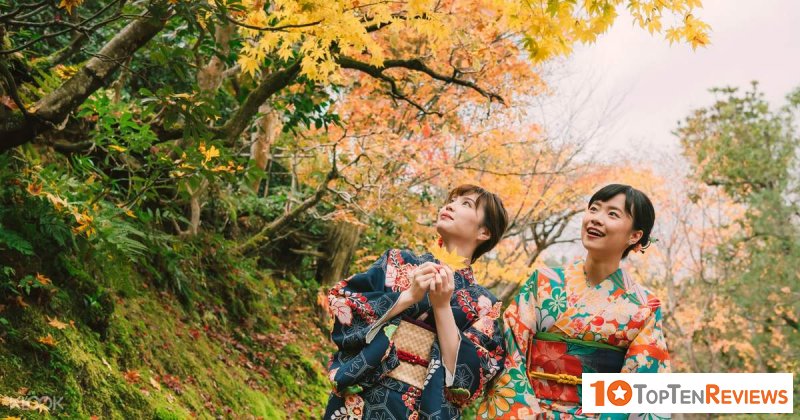
Making Kimono costume
Usually, a simple Kimono will include different parts such as Eri (collar), Fuki (heel), Sode (sleeve), Doura (full lining). In addition, Kimono is also worn with several accessories such as Nagajuban - a kimono-style bra is worn inside the main shirt. Kimonos are usually made from thin silk, which is difficult to clean, so there is a Nagajuban layer inside to prevent the shirt from coming into contact with human skin, leading to dirt; Haori: hip or thigh-length kimono jacket; Kanzashi: hair ornaments for women; Obi: Belt worn with Kimono; Tabi: high socks; Zori: traditional sandals for both men and women and some other accessories specific to certain professions.
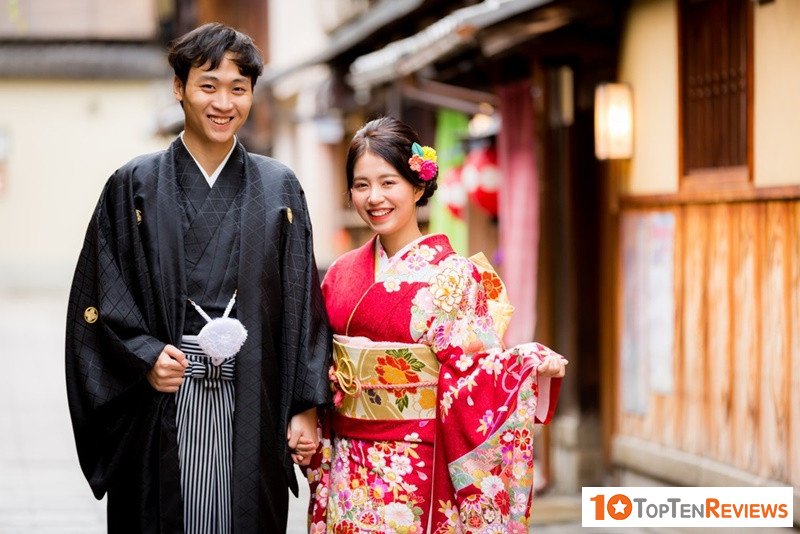
Meaning of Kimono
This type of sub-site has a very early process of formation and development. Through many processes of mutation, Kimono has become a symbol of Japan. Each traditional Kimono is seen as a beautiful work of art. Although it is no longer as popular as it used to be, the Japanese still have standard ways of wearing Kimono, especially for women. Choosing a suitable Kimono requires many factors: symbol, style, dress size, reflecting the woman's age, marital status as well as the importance of the ceremony. Specifically:
- FuriT: FuriT, also known as Furisode, is a Kimono for unmarried girls to wear in the coming of age ceremony or the bride's relatives are unmarried.
- Hamongi: worn by unmarried or married women. Usually, friends of the bride will wear it at the wedding or at formal parties.
- Iromuji: worn by both married and unmarried women in tea ceremonies. Mofuka: is the official mourning attire for both men and women.
- Tomesode: is the dress worn by married women at the wedding party of their relatives.
- Kurotemesode: usually worn by the mother of the bride and groom. Tsukesage: usually worn by married women to parties (not rituals).
- Uchikake: is an outfit expressing elegance, worn by the bride or at stage performances.
- Shiromaku: is a white kimono worn by the bride at the wedding ceremony. This outfit is usually accompanied by a white Tsunokakushi headband.
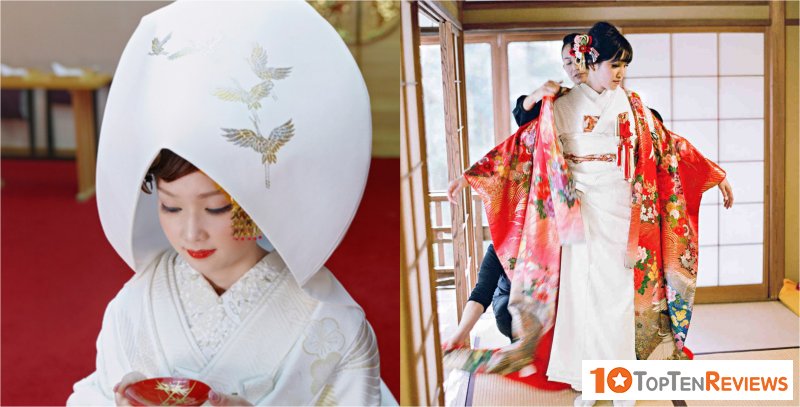
- Yukata: is an informal Kimono, usually worn during festivals in the summer by both men and women of all ages. This type of accessory should simply be worn at home at most times of the year.
- Junihitoe: is an extraordinarily complicated and formal dress often worn by aristocratic women in the court. Nowadays, Jinihitoe is usually only seen in movies, museums, tourist attractions, or some festivals. This accessory is also used by the Japanese royal family on some formal occasions.
Besides, the Japanese also choose clothes according to the season: light colors such as bright blue for spring, light purple or dark blue for summer, dark yellow for autumn, and black or red for winter.
The difference between Ao Dai Vietnam and Kimono
Parts of the costume
Observe the following two photos, you will see the difference: While the Ao Dai has only 12 parts, the Kimono has 16 parts. At first glance, it seems that Kimono just needs to be wrapped and tightened with an Obi.
But no, because it looks so simple, wearing Kimono is more complex than ever.
The image above is just the last top you'll ever see. However, inside there are many other parts, as shown below.
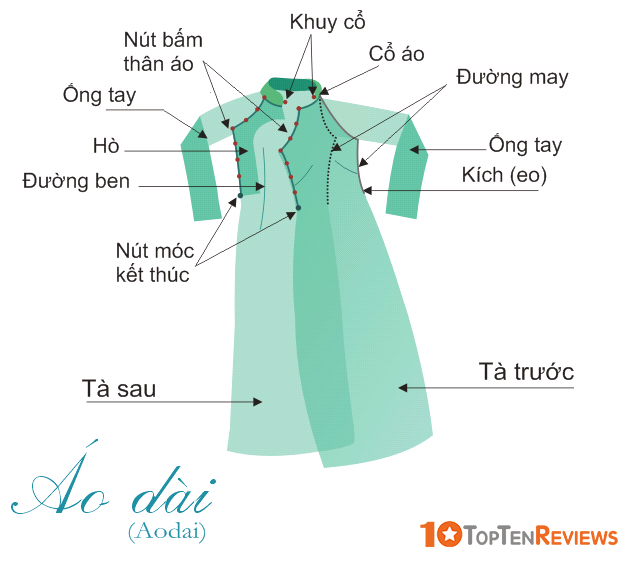
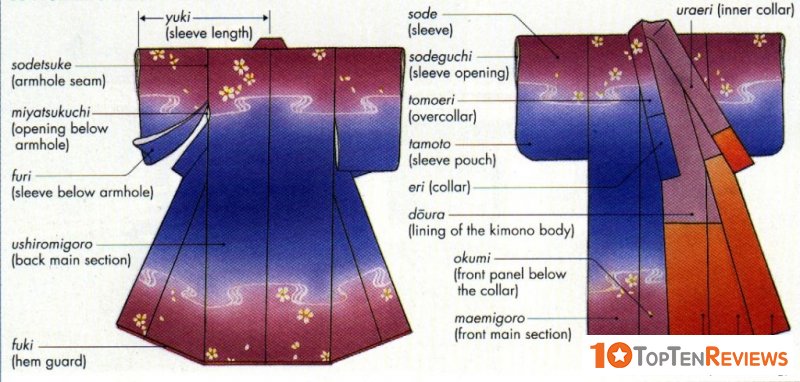 Therefore, almost only those who have passed school or have a certificate to wear Kimono can wear it. So, do not misunderstand that Japanese people can wear Kimono for others or even for themselves.
Therefore, almost only those who have passed school or have a certificate to wear Kimono can wear it. So, do not misunderstand that Japanese people can wear Kimono for others or even for themselves.
As for the Ao Dai, it may make you confused the first time you wear it, especially at the collar. But the next time, anyone can wear it quickly.
The difference in climate also affects the costumes, more or less. Except for summer, almost every season in Japan is fantastic, even extremely cold in winter, so Kimono consists of many layers. Many layers are also for the reason of keeping the body warm. As for Vietnam, especially to the south, is hot all year round, so the Ao Dai simply consists of a single layer.
Species
Ao dai
According to the purpose of use, we can divide into 3 main types of ao dai: the school ao dai, the casual ao dai, and the wedding ao dai.
Recently, there have been more innovative styles of Ao Dai with many exciting variations and equally feminine.
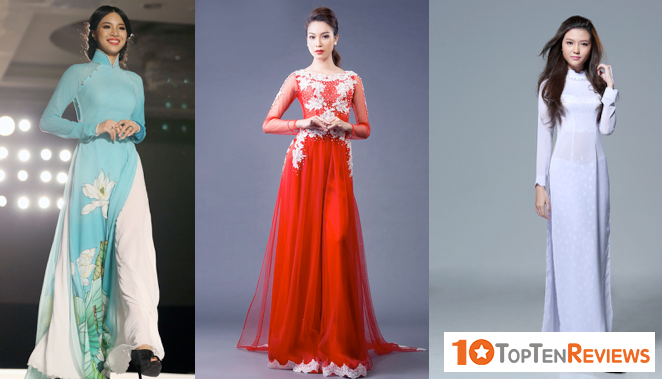
Kimono
In the life of every Japanese, they have to go through at least 4 significant ceremonies, namely 冠婚葬祭 (Kan-kon-sou-sai), including coming of age ceremony, wedding ceremony, funeral ceremony, and ancestor worshiping ceremony. Each such ritual corresponds to a different type of Kimono.
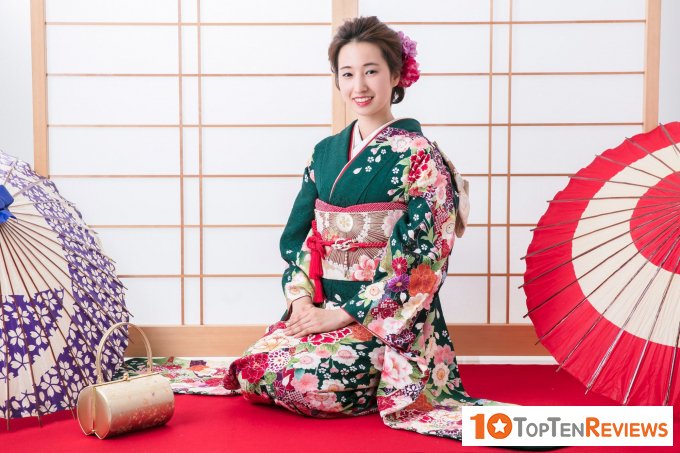
Price
Regarding Ao Dai, including fabric and tailor's wages, the cost for an Ao Dai according to your Size is very diverse, ranging from about 300,000 VND (~13,20$) or more.
In particular, the wedding Ao Dai is quite expensive because of the level of sophistication, the type of fabric, and the reputation of the designer.
The currently available ao dai sets are not much different from the price of custom-made ao dai. Therefore, it is normal for Vietnamese girls to own 2 or 3 sets of ao dai.
The Kimono is different. You can hardly find Japanese houses nowadays that have Kimono in the closet.
Because the price to buy or sew a Kimono is exceptionally high, the cheapest can be from 100,000 yen (About more than 20 million VND ~ more than 879,70$), excluding small parts such as bras, obi, sandals, brooches, and handbags… Therefore, saying that a Japanese person owns a Kimono is synonymous with owning a fortune.
Not to mention, if you order, you can only wear it 1-2 times and then put it in the closet, so many Japanese choose a safe option, which is to rent a Kimono.
From March 7-5 for children or funerals, they can rent a set to wear for each occasion for about 10,000 yen (More than 2 million VND ~ more than 87,97$). But the high price also has its reasons. Thanks to the meticulousness in the completely handmade sewing process and the fabric and careful maintenance, the life of the Kimono is very long. It can even be passed down through generations of grandchildren and great-grandchildren.
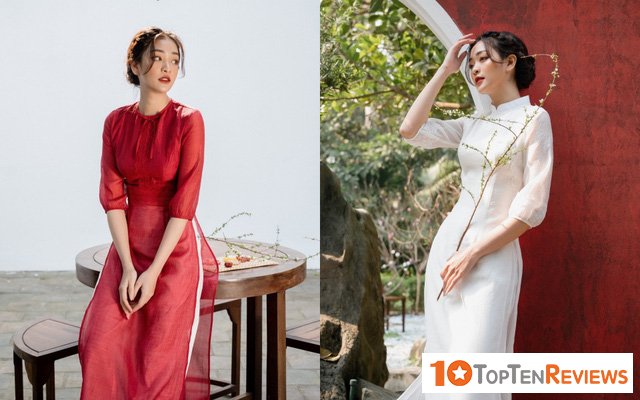
Popularity
Referring to the popularity in the life of these two national costumes, Ao Dai seems to be better.
Vietnamese students start wearing Ao Dai from high school. Some schools wear it 3 days a week, some schools wear it all week as a mandatory uniform.
Moreover, the modern ao dai now creates more comfort and dynamism for girls, so they can also be chosen as streetwear or taking pictures with friends.
Now, in addition to the New Year holidays, the Ao Dai becomes more closely associated with the lives of Vietnamese women and girls.
In Japan, you can hardly see the silhouette of Japanese girls in Kimono if it is not a holiday. If so, it's foreign girls or tourists who experience wearing Kimono or taking pictures of Check-in. However, another traditional shirt style quite similar to Kimono that is very popular with Japanese women, especially in the summer, is Yukata. Because the price is not too high, instead of Kimono, young women easily "buy" for themselves a set so that the fireworks night can hold their lover's hand on the street.
